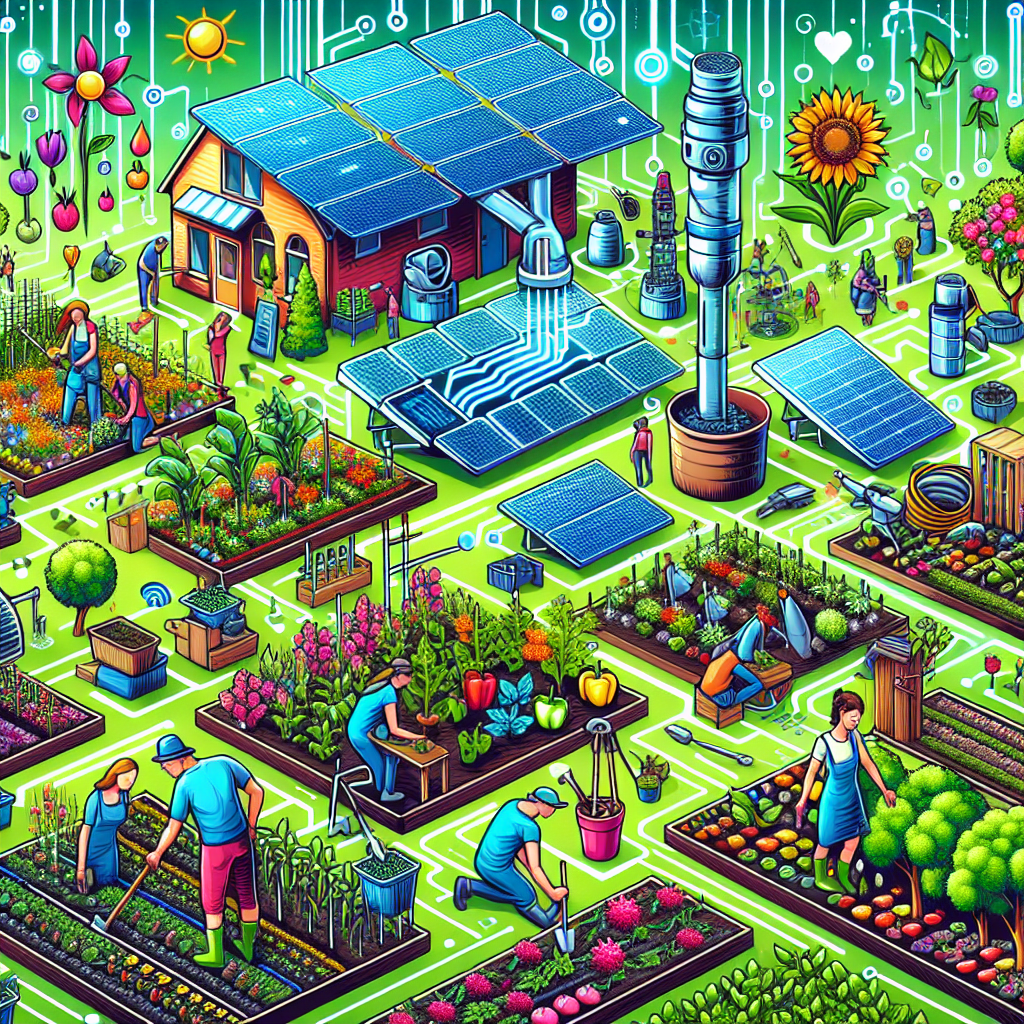The Power of Community Gardens: Cultivating Connections and Change
Explore the benefits, organization, and impact of community gardens in addressing societal challenges and fostering sustainable practices.

Introduction
Community gardens are spaces where individuals come together to collectively grow and cultivate plants, usually vegetables, fruits, or herbs. These gardens are typically located in urban or suburban areas and provide a shared space for people to connect with nature, grow their own food, and build a sense of community.
Community gardens play a crucial role in addressing various societal challenges such as food insecurity, lack of green spaces, and social isolation. These gardens bring people together, promote sustainable practices, and enhance the overall well-being of individuals and communities.
Benefits of Community Gardens
Social Benefits
Community gardens serve as hubs for social interaction and community building. They create opportunities for people from diverse backgrounds to connect, share knowledge, and foster a sense of belonging. Research by sociologist Dr. Sarah Thompson highlights that community gardens contribute to improved mental health and social cohesion within neighborhoods.
Economic Benefits
Community gardens offer economic benefits to both individuals and communities. By growing their own produce, gardeners can reduce their grocery bills and improve food affordability. From a wider perspective, community gardens can stimulate local economies by increasing property values, attracting visitors, and creating job opportunities in related sectors such as landscaping and agriculture.
Environmental Benefits
These gardens contribute positively to the environment in multiple ways. They improve air quality by reducing pollution and can also act as natural habitats for beneficial insects and wildlife. Moreover, community gardens promote sustainable gardening practices such as composting and rainwater harvesting, reducing the overall environmental footprint of food production.
How Community Gardens Work
Formation and Organization
Community gardens are usually initiated by a group of interested individuals who come together to form a garden association or committee. This group is responsible for securing a suitable location, obtaining necessary permissions, and establishing the legal framework for the garden. Moreover, they coordinate activities, maintain records, and facilitate communication among gardeners.
Design and Construction
The design of a community garden involves careful consideration of factors such as layout, accessibility, and sustainability. Expert landscape architects are often consulted to create an aesthetically pleasing space that maximizes efficiency and fosters community engagement. Construction involves tasks such as soil preparation, installing beds or raised garden boxes, and setting up irrigation systems.
Allocation of Plots
Community garden organizers develop a plot allocation system to ensure fair distribution of gardening spaces. This may include factors like lottery systems, seniority, or specific criteria for selection. The allocation process is crucial in maintaining a sense of equity and inclusivity within the garden.
Gardening Methods
Community gardens generally encourage organic and sustainable gardening practices. This includes avoiding the use of chemical pesticides and fertilizers, composting, and utilizing companion planting techniques. Gardeners may also receive training and support from experts in areas such as soil health, crop rotation, and pest management.
Maintenance and Management
Regular maintenance is essential to ensure the success of community gardens. Gardeners are responsible for taking care of their own plots while also contributing to communal tasks such as weeding common areas, maintaining pathways, and addressing any infrastructure issues. In many cases, garden committees organize workshops or workdays to facilitate knowledge sharing and collective maintenance efforts.
Case Studies
XYZ Community Garden
In the XYZ Community Garden, located in City A, the garden association collaborated with the local government to secure vacant land for the project. With the support of local businesses and community volunteers, the garden was designed and constructed to include accessible pathways, raised beds, and a communal gathering area. The garden has become a thriving hub of activity, providing fresh produce to local residents and organizing educational workshops on sustainable gardening practices.
ABC City Greening Project
The ABC City Greening Project in City B transformed an underutilized lot into a vibrant green space. The project was spearheaded by a non-profit organization passionate about urban agriculture. The community garden now serves as an educational center for urban farming, hosting school field trips and workshops on healthy eating. The garden has also sparked new social initiatives, such as a gardening club for seniors, resulting in increased intergenerational connectivity.
Expert Insights
Testimony from Dr. Jane Greenfield
According to Dr. Jane Greenfield, horticulturist and community gardening expert, "Community gardens provide a space for individuals to reconnect with nature, engage in physical activity, and develop valuable gardening skills. They foster a sense of shared responsibility and pride within communities."
Interview with Community Garden Organizer, John Smith
John Smith, an experienced community garden organizer, shares his insights: "Community gardens empower individuals to take control of their food production and improve their overall quality of life. These gardens have the potential to bridge social and cultural divides, fostering empathy and understanding among diverse groups."
Implications and Conclusion
Community gardens are powerful tools for addressing social, economic, and environmental challenges faced by communities. They promote sustainable practices, enhance food security, and strengthen social bonds. By investing in community gardens, governments, organizations, and individuals can create positive change at both the micro and macro levels.
Call to Action
If you are interested in starting a community garden in your area or want to get involved in an existing one, reach out to local gardening associations, non-profit organizations, or your city's Parks and Recreation Department. Join the conversation on social media using the hashtag #CommunityGardens and share your experiences, tips, and success stories. Together, we can cultivate a greener, healthier, and more connected world.